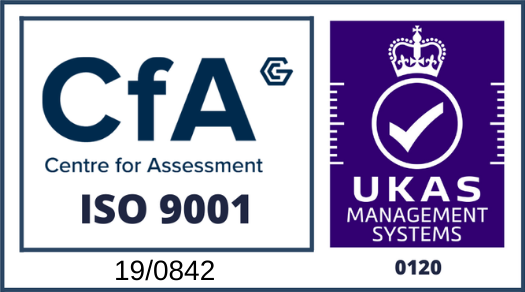For many organisations, accessibility has historically been an afterthought in software development projects. However, as digital experiences become increasingly central across industries, creating inclusive products is no longer just ideal - it's imperative.
Beyond complying with changing regulations around digital inclusion, there is a convincing business case for building accessible products, widening an audience reach to over 14 million people in the UK, with a spending power of £275 million a year. Whereas in 2019, UK businesses lost more than £17 billion because of users abandoning sites with accessibility barriers.
With legislation like the Web Content Accessibility Guidelines (WCAG) 2.1 setting clear standards, organisations must make concerted efforts to integrate accessibility into their software development lifecycles. Though this requires a shift in priorities, equipping developers with proper guidelines and making accessibility intrinsic to software projects is achievable - and delivers immense value.
This article covers:
- What is accessibility in software development
- Guidelines for accessible software
- Benefits of accessible software
- Integrating accessibility into software development
- Areas to begin with
- Two example case studies
What Is Accessibility in Software Development?
Accessibility refers to designing and developing digital products that can be effectively used by all people, regardless of disability or other factors that might impact their experience.
Fundamentally, accessibility means ensuring software provides comparable ease of use and quality engagement for all users. With approximately 14 million people in the UK having some form of disability, building inclusively aligns with an organisation’s audience reach and growth strategy.
Guidelines for Accessible Software
The accessibility regulations mandated by the UK government align with the Web Content Accessibility Guidelines (WCAG) 2.1 standards established by the World Wide Web Consortium (W3C). These provide the foremost guidelines for accessible software development.
WCAG 2.1 lays out four key principles:
- Perceivable - Ensure impaired users have alternative options by using multiple senses to convey content and meaning. This means providing text alternatives for images, captions for audio, adaptable text size and sufficient colour contrast.
- Operable - It must be possible for an application to be interacted with via a range of devices such as a mouse, keyboard, touchscreen, eye-tracker, etc. This requires keyboard accessibility and avoiding content that could trigger seizures.
- Understandable - Content and user interface must be understandable and ideally obvious to work with. This requires clear language, consistent navigation and features that help users avoid mistakes and correct errors.
- Robust - Content must be interpretable by a wide range of user agents like browsers and assistive technologies and built on perpetual and stable foundations such as semantic HTML to ensure application longevity.
Beyond these technical guidelines, understanding real user challenges through engaging the end users to test the efficacy of the implemented solutions is invaluable for building empathy, fostering a sense of user buy-in and developing a truly accessible product.
Benefits of Accessible Software
Why should organisations prioritise accessibility given the effort required? Some key advantages include:
- Expanded audience - Accessible products mean more users can engage with your software. The disability market represents an immense and widely under-represented segment.
- Enhanced UX - Making interfaces perceivable and understandable improves usability for all users. Accessibility often leads to more intuitive, frictionless experiences with fewer errors.
- Compliance - Adhering to standards like WCAG reduces legal risks associated with inaccessible software under UK regulations.
- Reputation - Commitment to accessibility communicates an organisation’s values and earns goodwill from users. It signals a dedication to inclusion.
- Innovation - Constraints imposed by striving for accessibility drive teams to find creative solutions, like more contextual interfaces.
Integrating Accessibility into Software Development
With clear guidelines available, how can organisations make accessibility integral to their software development practice? The following key focus areas can drive real change:
Promote Accessibility Education & Training
- Require all developers to complete accessibility training, with annual refreshers, to instil an understanding of guidelines and assistive technologies.
- Enable developers to shadow impaired users for a day to experience real-world challenges first-hand.
- Discuss accessibility in team meetings to reinforce its importance and share knowledge.
Set Clear Guidelines & Standards
- Establish your organisation's accessibility standards based on WCAG level AA or AAA conformance.
- Create internal accessibility guidelines tailored to your tech stack with code snippets and design patterns.
- Publish a clear Accessibility Statement to signal to users and employees alike of your commitment to improving accessibility and thereby inclusivity in your organisation.
Integrate into Existing Development Processes
- Add accessibility user stories, acceptance criteria and test cases to backlogs and sprints.
- Incorporate accessibility reviews into design/code reviews before release.
- Appoint "accessibility champions" on each team to advocate for inclusive practices.
Automate Accessibility Checking
- Utilise browser extensions to scan your site, or accessibility linting tools directly in code editors and IDEs of choice to catch potential pitfalls earlier.
- Integrate automated accessibility testing into CI/CD pipelines to catch issues pre-release.
- Track accessibility defects separately from general software bugs for visibility and implement a clear regression strategy to avoid inadvertently introducing future issues.
Test with Assistive Technologies
- Conduct manual testing with screen readers, keyboards etc. on all features.
- Recruit users with impairments to test products and provide feedback.
- Actively request accessibility bug reports from users through your software.
Accessibility in Action
Software teams might feel daunted envisioning how to completely modify processes to accommodate accessibility. However, small but meaningful changes pave the way. Example areas to begin with:
- Add alternative text (alt text) for all images - Alt text provides a text alternative for images allowing screen readers to convey meaning to visually impaired users. This simple addition makes visual content exponentially more accessible.
- Use proper heading tags - Heading tags semantically structure content on a page. This enables more efficient navigation, especially for keyboard and screen reader users.
- Ensure sufficient colour contrast - Low contrast between text and background colours can make content difficult to perceive for some users. Meeting minimum colour contrast standards improves readability.
- Make links descriptive - Using generic "click here" links can cause confusion. Hyperlink text should be descriptive of destination content, again aiding screen reader users.
- Allow font size adjustments - Enable text resizing by using relative units like EM or percentages for typography. This allows those with low vision to scale text to a readable size.
- Add focus indicators - Visually indicate when interactive elements like links and buttons are in focus, generally through underlines or background colour changes. This helps keyboard navigation.
- Structure data tables properly - Markup data tables with HTML tags to associate headers with data cells, improving comprehension.
- Label form fields clearly - Use
- Provide captions for multimedia - Audio or visual content should have accompanying captions for those with hearing or visual impairments.
These are some examples of relatively simple yet high-impact accessibility practices that can dramatically improve website inclusiveness.
Rather than a burden, accessible development done right results in higher quality software experiences. With forethought and empathy for diverse users, organisations can build products that work for everyone.
Case Studies: Accessibility Success Stories
Accessibility might seem like an abstract concept, but real organisations have delivered tangible successes by embracing it. Two UK case studies showcase the power of inclusive design:
NHS
The NHS underwent a digital accessibility overhaul back in 2016 to improve usability for all. Changes involved simpler interfaces, reduced PDFs and removal of distracting elements like banner ads.
This improved accessibility led to a 75% increase in daily website users. By considering diverse users through more thoughtful design, the NHS enhanced engagement across its digital platforms.
Tesco
Tesco partnered with the Royal National Institute of Blind People (RNIB) in 2011 to improve the accessibility of its grocery delivery website. After testing with visually impaired users, Tesco increased colour contrast, improved page layouts and added comprehensive alt text.
Post-improvements, Tesco reported a 350% increase in accessible website sales. Focusing on inclusion expanded Tesco's audience and directly grew revenue.
These examples showcase that with developer education and embedding accessibility into design processes, organisations can create more inclusive products that serve users better. Though an upfront investment, prioritising accessibility pays dividends through superior user experiences and reaching more customers.


